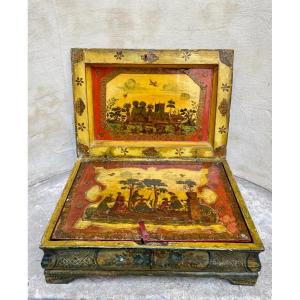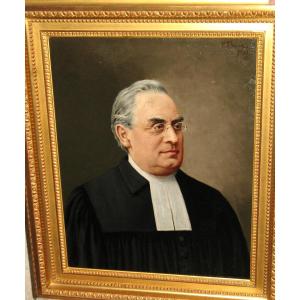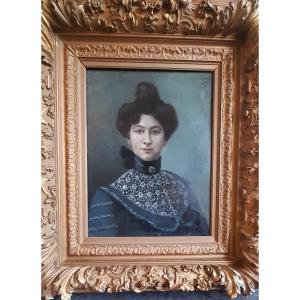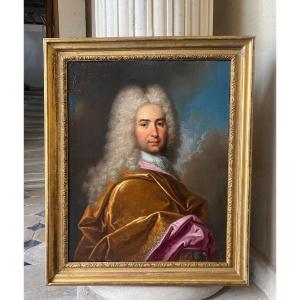Our model wears a long wig in imitation of Louis XIV, as was worn until around 1720. A strong symbol of the Ancien Régime, this type of very expensive wig was only worn by the high nobility and courtiers and marked the high social status of the person who wore it. He wears a beautiful yellow ocher velvet cape embroidered with silver and lined with silk taffeta, extraordinarily expensive fabrics at the time.
The manner, the style, everything makes us think of François de Troy to whom we can attribute this portrait or to his workshop. It was very common for the best students and assistants to start the painting and for the master to finish the canvas by bringing his touch, his character, his style, his genius.
François de Troy (1645-1730) from a family of Toulouse artists, made a name for himself very early on with the creation of coats of arms for the solemn entry of the Prince de Conti into Toulouse in 1662. We then find him in Paris where he continued his training in the studio of Nicolas Loir, then of Jean I Cotelle, whose daughter he married in 1668. First a history painter, he was approved by the Academy in 1671 then received in 1674 with "Mercury and Argus”. Through his frequentation of Claude Lefebvre's studio, he turned to the art of portraiture, of which he was to be one of the greatest representatives of the end of the reign of Louis XIV and the Regency. It is believed that thanks to his friendship with Charles Le Brun, the King's first painter, he was put in contact with Madame de Montespan, who made him one of her appointed artists. The interpersonal skills of the impetuous favorite will allow her to come into contact with the royal family and with everything that matters at court and in Paris. He will also be the portraitist of the royal family of England, exiled in France to the castle of Saint-Germain-en-Laye from 1689. A fine courtier, François de Troy then became attached to the Duke of Maine, beloved bastard of Louis XIV and his influential wife, daughter of the Prince of Condé. Assistant professor in 1692, he was appointed professor at the Academy the following year. He will be its director from 1708 to 1711. He will also be called upon several times by the Parisian aldermen for religious commissions. His son Jean-François (1679 – 1752) collaborated with him at the end of his career before taking up the torch and perpetuating the family glory.
Dimensions with the frame 90x80 cm

























 Le Magazine de PROANTIC
Le Magazine de PROANTIC TRÉSORS Magazine
TRÉSORS Magazine Rivista Artiquariato
Rivista Artiquariato
